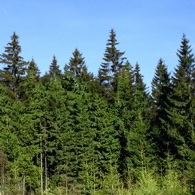|
Fibers in comparison
|
Cellulosic chemical fibers today stand for about 6 % of the global fibers’ production, the share of cotton is 33 %, the share of wool about 2 %. The remaining 59 % of the global fibers’ production are synthetic chemical fibers.
At the moment, the growing of cotton already consumes about 25 % of all land, which would be suitable for the growing of food. Conventional cotton growing consumes about 10 % of all insecticides and about 20 % of all pesticides globally used. At the same time, for the growing of 1 ton of cotton fiber about 25,000 cbm of irrigation is needed – very often in regions, where water is not in surplus.
Land, which is used for forestry, is not in competition with food growing and uses sustainable plantations of wood instead. Forest and wood plantations grow without irrigation and without the use of chemicals. In the manufacturing of viscose fibers only process water and cooling water are needed, which represents only one seventieth (1/70) from the water being required for the growing of cotton.
Therefore, ENKA® Viscose can help to contribute to the growing demand for garments, which are sustainably and responsibly produced.
For more information see “Resources”. |
|
      |





